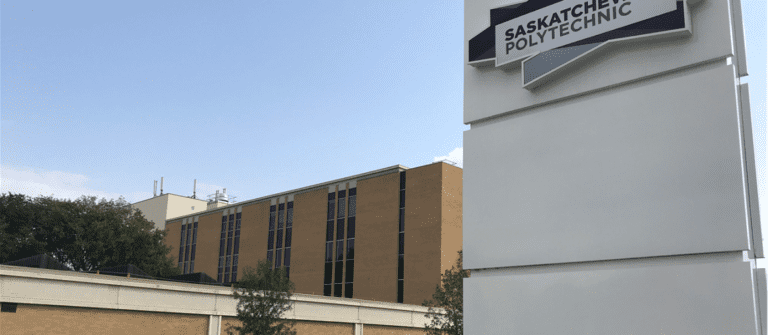IGEL Blog

Saskatchewan Polytechnic Lowers Cost and Complexity of End User Computing with IGEL
Educational Institution to See Savings of $1 Million Over 5 Years by Avoiding Annual Hardware Refreshes
Saskatchewan Polytechnic in Canada has adopted virtual desktop infrastructure (VDI) along with IGEL OS to streamline how it delivers, manages and secures its entire end user computing (EUC) environment for over 16,000 students. This comprises 3,200 endpoints in 200 computer laboratories split across four geographically dispersed campuses.
Sask Polytech is Saskatchewan’s only polytechnic and the province’s primary institution for post-secondary applied education and research. Offering more than 150 programs and employing more than 1,500 faculty and staff, Sask Polytech provides certificate, diploma and degree programs and apprenticeship technical training for students on four campuses – Prince Albert, Regina, Moose Jaw and Saskatoon – as well as through distance education opportunities and academic partnerships.
Darryl Meyers, Sask Polytech’s team lead enterprise desktop management, explains, “Students were the catalyst for change. Moving to VDI was a big change with many moving pieces. As part of this we needed a thin client platform that ‘just works’ which IGEL delivers.”
IGEL OS was used to quickly convert existing Dell PCs into Linux-based managed endpoints. This means the Sask Polytech can now extend the lifespan of desktop hardware thereby saving CAD $1 million over five years as devices aren’t refreshed annually. This frees-up budget to invest in other projects including the funding of the institution’s move to VDI.
Located at its main datacenter in Saskatoon, Citrix Virtual Apps and Desktops has been installed running on clustered Cisco UCS Servers which utilize VMware’s vSphere Hypervisor. Sask Polytech worked with Canadian cloud specialist and IGEL reseller, iRangers, on the project.
Implementing VDI meant a new desktop solution was required to provide connectivity and this new solution needed to meet three primary goals:
- First, the technology had to be simple to learn, include advanced capabilities and still be easy to implement.
- Second, the solution needed to help the polytechnic extend the physical lifespan of hardware in its VDI-converted labs.
- Third, it was essential that it provide a consistent user experience.
Realizing Numerous Benefits with VDI and IGEL OS
For Sask Polytech, the benefits of the move to VDI with devices that use IGEL OS have been significant, including:
- Increased Computing Flexibility. VDI drastically simplifies how Sask Polytech IT is managed and enables staff and students to work in any computer lab, at any time, to access applications specific to their courses rather than being tied to particular physical classrooms or restricted by the availability based on teaching schedules.
- Minimized Complexity. VDI has allowed Sask Polytech to move away from the complexity of delivering 80 individual Windows desktop images which correspond to over 80 different industries related to its vocational courses. Some 200 applications have already been ported to VDI – a further 200 are still to do – with the polytechnic adopting cloud-based services as much as possible.
- Rapid Deployment. Implementation of IGEL OS campus-wide was fast. Around 2,000 IGEL OS licenses have been purchased. Each lab was converted in 30 minutes or less.
Meyers adds, “IGEL OS works on any x86 device. It’s agnostic. IGEL offered us more flexibility and allowed us to recycle devices which was what sold us.”
- Seamless User Adoption. Implementation of IGEL OS was managed by room per campus and the rollout has been seamless – accepted by staff and students alike – as evidenced by the lack of helpdesk tickets raised. Initially, faculty and staff had concerns that shifting to a new IT architecture would increase their workload as they learned how to use it. This has not been the case as the login screen and desktop have been designed to mimic the familiar Microsoft Windows ‘look and feel.’
- Improved User Experience. The student user experience has been vastly improved. Using IGEL OS-powered endpoints, the boot-up time to VDI and access to applications is now easily within a minute – well ahead of what students said in polytechnic surveys was acceptable to them. Support provided to them is also easier.
- Simplified Management. A small EUC team of just five run the whole desktop estate utilizing IGEL’s management console, UMS. Previously, lab management was complex and tedious. New labs, new or replacement computers, imaging, Windows updates, malware and viruses all took time to support and maintain. Put another way, keeping its computer learning environments up-to-date had become a challenge which IGEL OS has made far more agile as it can all be managed centrally across the four campuses using UMS.
Meyers says, “Our technical team is small. Having something that they could have confidence in supporting properly was of concern. IGEL stood out. It matched our primary goals and then some. And this has proved to be the case in practice. The simplicity of the system is its biggest advantage as it just works. Anyone can bring a computer online in minutes so we can respond to departmental requests for equipment really fast.”
- Enhanced Security. The IGEL OS-powered endpoints are 100% locked down so that students can’t move icons about, introduce malware or viruses which used to be a constant worry.
Looking Ahead
Going forward, the Sask Polytech EUC team will work on a project to install IGEL OS on desktop computers connected to peripherals in 600 smart classrooms. These devices include overhead projectors, smartboards, document cameras and so on. The target is to convert every computer room and computer to run IGEL OS by the end of 2020.
Read more about how IGEL helps education and research organizations get the most out of their virtualized environments, with multiple users on shared devices in these success stories.


